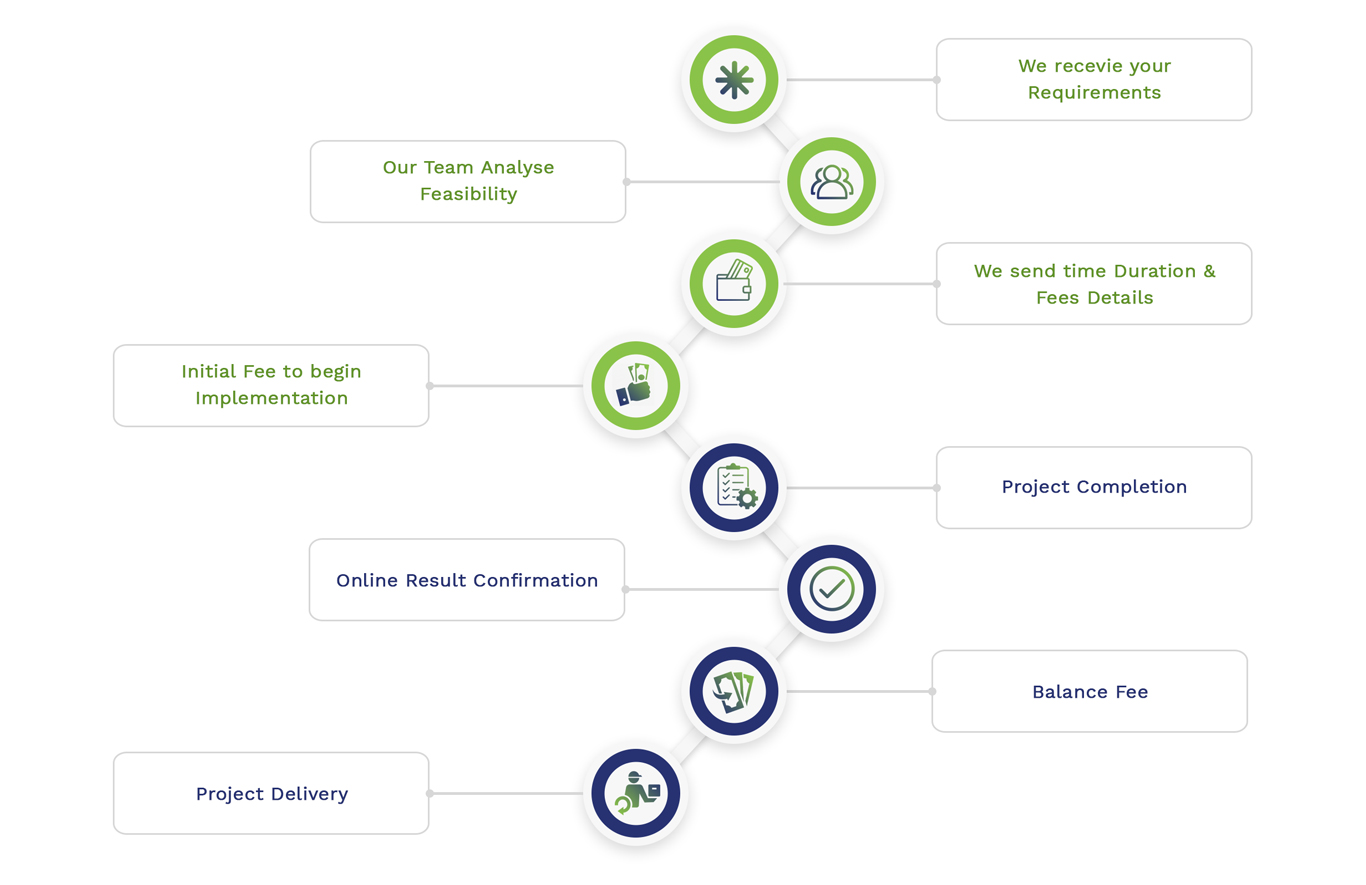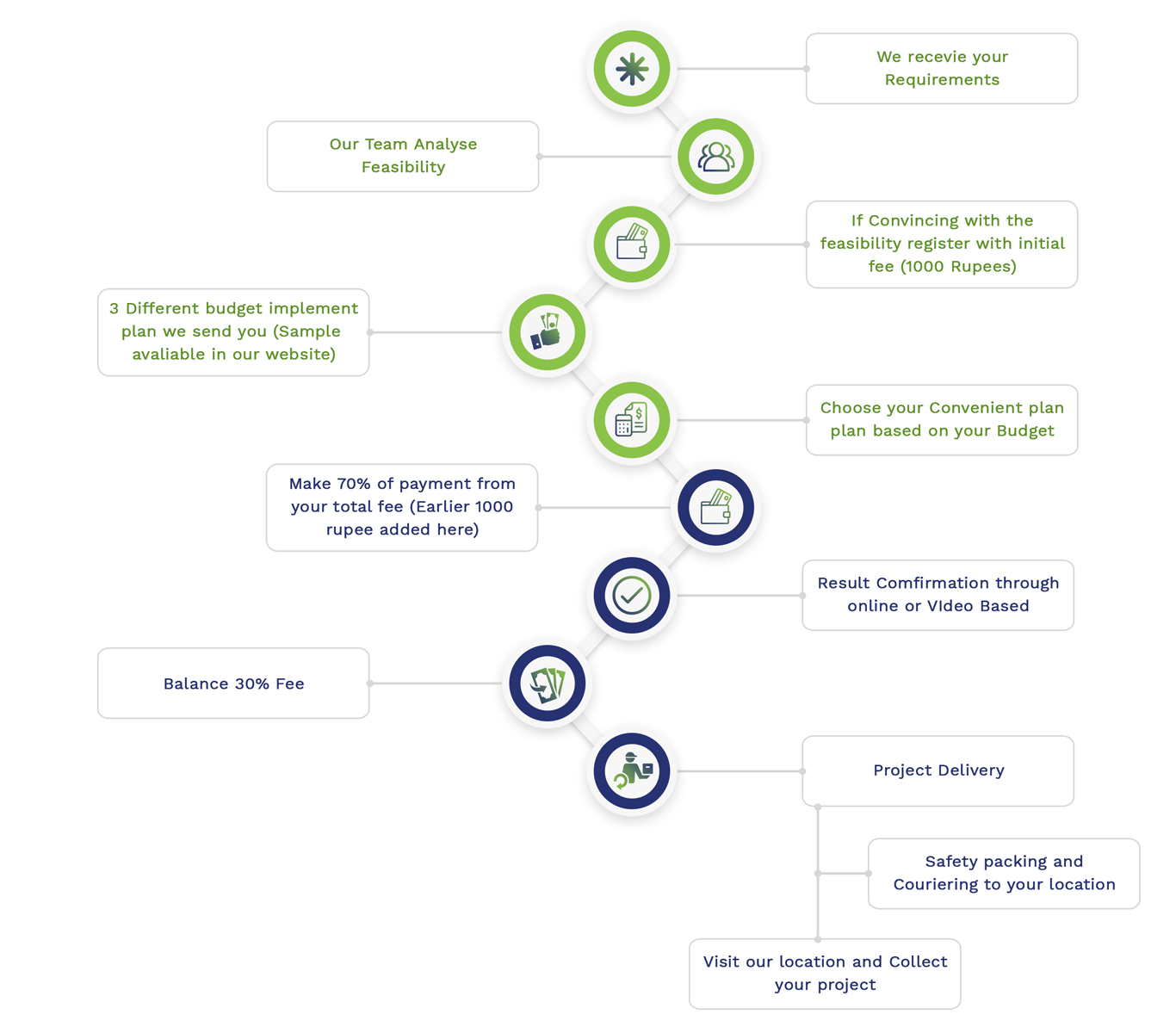Dc to Dc Converter Simulation in MATLAB are done by our developers here we carry on by Creating a simple buck converter is an interesting as well as challenging process that must be carried out by following numerous guidelines and procedures. As an instance, we develop a simple buck converter that has the ability to decrease the input voltage to a lesser output voltage. For best simulation support we will serve you right, we have all leading developers to carry on your project in a well specified way by sticking to the protocols.
Procedural Instruction to Simulate a Buck Converter in MATLAB/Simulink
Step 1: Open Simulink
- In the beginning, we should open MATLAB.
- As a means to initiate Simulink, type simulink in the MATLAB Command Window.
Step 2: Develop a Novel Model
- To develop a novel model, select “Blank Model” in the Simulink start page.
- By giving an appropriate name (for instance: buck_converter.slx), save the model.
Step 3: Append Elements
In order to design a buck converter, we require some essential elements, such as:
- Pulse Generator
- Diode
- Voltage Source (DC)
- Inductor
- MOSFET or Ideal Switch
- Load Resistor
- Capacitor
- Scope
- Current Measurement
- Voltage Measurement
Step 4: Set up the Circuit
DC Voltage Source
- Navigate to Simscape > Foundation Library > Electrical > Electrical Sources from the Simulink Library Browser. Within our model, we should drag the “DC Voltage Source” block.
MOSFET or Ideal Switch
- Drag the “Ideal Switch” block to our model by navigating to Simscape > Foundation Library > Electrical > Electrical Elements. From Simscape > Electrical > Specialized Power Systems > Power Electronics, the MOSFET block can be utilized.
Diode
- Within the model, drag the “Diode” block by clicking Simscape > Foundation Library > Electrical > Electrical Elements.
Inductor
- We have to drag the “Inductor” block to our model through navigating to Simscape > Foundation Library > Electrical > Electrical Elements.
Capacitor
- The “Capacitor” block must be dragged to our model by clicking Simscape > Foundation Library > Electrical > Electrical Elements.
Resistor (Load)
- It is necessary to drag the “Resistor” block to our model through navigating to Simscape > Foundation Library > Electrical > Electrical Elements.
Pulse Generator
- Drag the “Pulse Generator” block into the model by clicking Simulink > Sources.
Scope
- Within the model, we need to drag the “Scope” block through selecting Simulink > Sinks.
Voltage and Current Measurement
- Drag the “Current Sensor” and “Voltage Sensor” blocks to our model by navigating to Simscape > Foundation Library > Electrical > Sensors.
Step 5: Arrange the Elements
- DC Voltage Source
- The DC Voltage Source block must be double-clicked. Then, focus on fixing the voltage value (for example: 24V).
- Pulse Generator
- We have to double-click the Pulse Generator block. To regulate the duty cycle of the converter, set up the period and pulse width.
- Inductor
- Fix the inductance value (for instance: 1mH) by double-clicking the Inductor block.
- Capacitor
- Concentrate on fixing the capacitance value (for instance: 100 uF) through double-clicking the Capacitor block.
- Resistor
- It is important to fix the resistance value (for example: 10 ohms) by double-clicking the Resistor block.
Step 6: Link the Elements
To create the buck converter circuit, we have to link the elements as demonstrated below:
Vin (DC Voltage Source) –> Ideal Switch (Pulse Generator Control) –> Inductor –> Capacitor –> Load Resistor –> Ground
Step 7: Include Voltage and Current Sensors
- Among the load resistors, link the Voltage Sensor.
- With the inductor, link the Current Sensor in a sequential way.
Step 8: Link Scopes
- To track the output voltage, the result of the Voltage Sensor has to be linked to a Scope.
- In order to track the inductor current, the outcome of the Current Sensor must be linked to another Scope.
Step 9: Execute the Simulation
- The simulation time has to be fixed appropriately (for instance: 0.1 seconds).
- To initiate the simulation, we should select the “Run” button.
Sample Model Code
For the above specified procedures in Simulink, we provide an instance of the configuration code:
% Create a new model
model = ‘buck_converter’;
open_system(new_system(model));
% Add blocks
add_block(‘simscape/Utilities/Solver Configuration’, [model ‘/Solver Configuration’]);
add_block(‘simscape/Foundation/Electrical/Electrical Sources/DC Voltage Source’, [model ‘/DC Voltage Source’], ‘Value’, ’24’);
add_block(‘simscape/Foundation/Electrical/Electrical Elements/Ideal Switch’, [model ‘/Ideal Switch’]);
add_block(‘simscape/Foundation/Electrical/Electrical Elements/Diode’, [model ‘/Diode’]);
add_block(‘simscape/Foundation/Electrical/Electrical Elements/Inductor’, [model ‘/Inductor’], ‘Inductance’, ‘1e-3’);
add_block(‘simscape/Foundation/Electrical/Electrical Elements/Capacitor’, [model ‘/Capacitor’], ‘Capacitance’, ‘100e-6’);
add_block(‘simscape/Foundation/Electrical/Electrical Elements/Resistor’, [model ‘/Load Resistor’], ‘Resistance’, ’10’);
add_block(‘simulink/Sources/Pulse Generator’, [model ‘/Pulse Generator’]);
add_block(‘simulink/Sinks/Scope’, [model ‘/Scope’]);
add_block(‘simulink/Sinks/Scope’, [model ‘/Scope1’]);
add_block(‘simscape/Foundation/Electrical/Sensors/Voltage Sensor’, [model ‘/Voltage Sensor’]);
add_block(‘simscape/Foundation/Electrical/Sensors/Current Sensor’, [model ‘/Current Sensor’]);
% Connect blocks
add_line(model, ‘DC Voltage Source/1’, ‘Ideal Switch/1’);
add_line(model, ‘Ideal Switch/2’, ‘Inductor/1’);
add_line(model, ‘Inductor/2’, ‘Capacitor/1’);
add_line(model, ‘Capacitor/2’, ‘Load Resistor/1’);
add_line(model, ‘Load Resistor/2’, ‘Diode/1’);
add_line(model, ‘Diode/2’, ‘Ideal Switch/2’);
add_line(model, ‘Pulse Generator/1’, ‘Ideal Switch/2’);
add_line(model, ‘Voltage Sensor/1’, ‘Scope/1’);
add_line(model, ‘Current Sensor/1’, ‘Scope1/1’);
% Set simulation parameters
set_param(model, ‘StopTime’, ‘0.1’);
set_param(model, ‘Solver’, ‘ode45’);
% Run simulation
sim(model);
Important 50 dc to dc converter Project Topics
DC to DC converter is referred to as both an efficient and significant device which is employed among different fields in an extensive manner. By encompassing diverse kinds of converters, their applications, control policies, performance enhancement, and others, we list out some intriguing topics. For realistic application, research, and advancement in different domains, these topics are highly appropriate.
Simple DC-DC Converter Projects
- Design and Simulation of a Boost Converter
- Design and Simulation of a Buck Converter
- Design and Simulation of a Buck-Boost Converter
- Design and Simulation of a SEPIC Converter
- Design and Simulation of a Cuk Converter
Control Strategies
- PID Control for DC-DC Converters
- Fuzzy Logic Control of DC-DC Converters
- Model Predictive Control for DC-DC Converters
- Voltage Mode Control of DC-DC Converters
- Neural Network-Based Control of DC-DC Converters
- Sliding Mode Control of DC-DC Converters
- Digital Control of DC-DC Converters Using Microcontroller
- Current Mode Control of DC-DC Converters
- Hysteretic Control of DC-DC Converters
- Adaptive Control for DC-DC Converters
Latest Topics
- Isolated DC-DC Converters (Flyback, Forward, Push-Pull)
- Multi-Phase DC-DC Converters
- Soft Switching Techniques in DC-DC Converters
- Zero Current Switching (ZCS) in DC-DC Converters
- GaN-based DC-DC Converter Design
- High-Frequency DC-DC Converter Design
- Bidirectional DC-DC Converter Design
- Interleaved DC-DC Converters
- Zero Voltage Switching (ZVS) in DC-DC Converters
- Synchronous Rectification in DC-DC Converters
Renewable Energy Applications
- Maximum Power Point Tracking (MPPT) Using DC-DC Converters
- DC-DC Converters for Solar Photovoltaic Systems
- Battery Charging Systems Using DC-DC Converters
- DC-DC Converters for Wind Energy Systems
- Hybrid Renewable Energy Systems Using DC-DC Converters
Electric Vehicles
- Bidirectional DC-DC Converters for EV Charging
- DC-DC Converters for Battery Management Systems in EVs
- DC-DC Converters for Electric Vehicle Powertrain
- On-Board DC-DC Converters for Electric Vehicles
- Regenerative Braking Using DC-DC Converters in EVs
Power Quality and Stability
- Harmonic Analysis in DC-DC Converters
- Dynamic Performance Analysis of DC-DC Converters
- Transient Response Improvement in DC-DC Converters
- Ripple Minimization Techniques in DC-DC Converters
- Voltage Regulation and Stability in DC-DC Converters
Efficiency and Thermal Management
- Efficiency Optimization in DC-DC Converters
- Energy Harvesting Using DC-DC Converters
- Thermal Management in High-Power DC-DC Converters
- Design of Low-Loss Inductors for DC-DC Converters
- Loss Analysis in DC-DC Converters
Specialized Applications
- DC-DC Converters for LED Lighting Systems
- DC-DC Converters in Industrial Automation
- Integration of DC-DC Converters in Smart Grids
- Portable Device Power Supply Using DC-DC Converters
- Wireless Power Transfer Using DC-DC Converters
Simulation and Modeling
- MATLAB/Simulink Modeling of DC-DC Converters
- Hardware-in-the-Loop (HIL) Simulation for DC-DC Converters
- Optimization of DC-DC Converter Design Using Genetic Algorithms
- PSpice Simulation of DC-DC Converters
- Real-Time Simulation of DC-DC Converter Systems
Protection and Reliability
- Overcurrent and Overvoltage Protection in DC-DC Converters
- Electromagnetic Interference (EMI) Reduction in DC-DC Converters
- Fault Detection and Protection in DC-DC Converters
- Design of Fault-Tolerant DC-DC Converters
- Reliability Analysis of DC-DC Converters in Harsh Environments
Research and Advancement
- Development of New Topologies for DC-DC Converters
- DC-DC Converters for Space Applications
- Scalability of DC-DC Converters for Large-Scale Applications
- Study of Parasitic Effects in High-Frequency DC-DC Converters
- Investigation of New Control Algorithms for DC-DC Converters
To simulate a Buck Converter in MATLAB/Simulink, we offered a procedural instruction in a step-by-step manner and an explicit instance for creating a simple buck converter. Appropriate for realistic application, research, and advancement, several compelling project topics are suggested by us, which are related to DC to DC converter. If you want to get tailored services then share with us your project details we will guide you immediately.
Subscribe Our Youtube Channel
You can Watch all Subjects Matlab & Simulink latest Innovative Project Results
Our services
We want to support Uncompromise Matlab service for all your Requirements Our Reseachers and Technical team keep update the technology for all subjects ,We assure We Meet out Your Needs.
Our Services
- Matlab Research Paper Help
- Matlab assignment help
- Matlab Project Help
- Matlab Homework Help
- Simulink assignment help
- Simulink Project Help
- Simulink Homework Help
- Matlab Research Paper Help
- NS3 Research Paper Help
- Omnet++ Research Paper Help
Our Benefits
- Customised Matlab Assignments
- Global Assignment Knowledge
- Best Assignment Writers
- Certified Matlab Trainers
- Experienced Matlab Developers
- Over 400k+ Satisfied Students
- Ontime support
- Best Price Guarantee
- Plagiarism Free Work
- Correct Citations
Expert Matlab services just 1-click

Delivery Materials
Unlimited support we offer you
For better understanding purpose we provide following Materials for all Kind of Research & Assignment & Homework service.
 Programs
Programs Designs
Designs Simulations
Simulations Results
Results Graphs
Graphs Result snapshot
Result snapshot Video Tutorial
Video Tutorial Instructions Profile
Instructions Profile  Sofware Install Guide
Sofware Install Guide Execution Guidance
Execution Guidance  Explanations
Explanations Implement Plan
Implement Plan
Matlab Projects
Matlab projects innovators has laid our steps in all dimension related to math works.Our concern support matlab projects for more than 10 years.Many Research scholars are benefited by our matlab projects service.We are trusted institution who supplies matlab projects for many universities and colleges.
Reasons to choose Matlab Projects .org???
Our Service are widely utilized by Research centers.More than 5000+ Projects & Thesis has been provided by us to Students & Research Scholars. All current mathworks software versions are being updated by us.
Our concern has provided the required solution for all the above mention technical problems required by clients with best Customer Support.
- Novel Idea
- Ontime Delivery
- Best Prices
- Unique Work
Simulation Projects Workflow

Embedded Projects Workflow



 Matlab
Matlab Simulink
Simulink NS3
NS3 OMNET++
OMNET++ COOJA
COOJA CONTIKI OS
CONTIKI OS NS2
NS2






